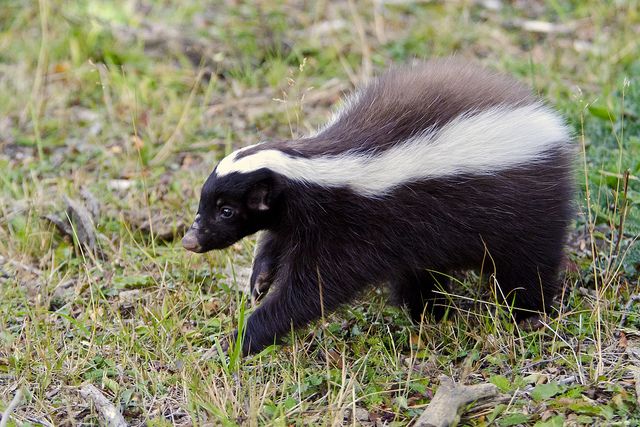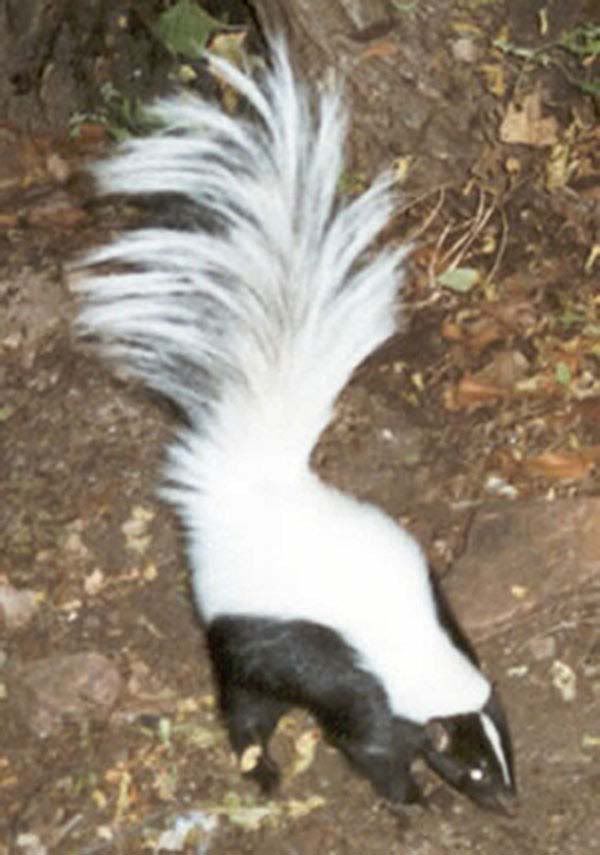
This informative post will be published on Saturday in place of my regular one. You are invited to participate with the opening question.
Brain Teaser Question
What ancient invention allows people to see through walls?
(answer found at the end of this post)
Featured Facts
The early morning scent of a skunk reminds anyone nearby to be on the lookout for this black and white scavenger. The skunk lives throughout the continental United States.
Here are a few quick facts about the skunk:
- Body length: for some species, nearly 3 feet (including its bushy tail)
- Body weight: as much as 15 pounds
- Diet: (omnivores) berries, nuts, eggs, insects, small animals
- Lifespan: up to 5 years
There are several species in the skunk family. Some of the more common ones include hog-nosed (long, bald snout), hooded (impressive neck ruff), and spotted (much smaller than most). The most abundant species is the striped skunk, with a black body accented by two white stripes running along the back.
Being nocturnal hunters and food gathers, skunk’s strong sense of smell helps them in their pursuit of food. However, they possess extremely poor eyesight.
A skunk’s body is designed to assist in the pursuit of another meal. They possess a stout build with short legs and long bodies. Their muscular front legs feature long and sharp claws, which allow them to be excellent diggers.
Skunks live in small groups (called surfeits) in underground burrows. and their young are called kits. Gestation in females usually lasts about two months, though they can delay until more suitable weather for giving birth. Typically, each liter of kits runs between four and six in number. Many skunks are carriers of rabies, which is fatal to them.
When threatened, skunks own one of nature’s most effective defense systems. With scent glands hidden under the tail, a quick elevation of it will spray a victim up to 12 feet away. A sticky, oily substance with an extreme smell is transmitted as a fine mist. It immediately causes tearing of eyes and choking.





top left: baby skunk called a kit. going clockwise, The remaining photos show different species: hooded, spotted, striped, and hog-nosed. (Images courtesy of Pinterest)
Answer to Brain Teaser Question
Windows.
